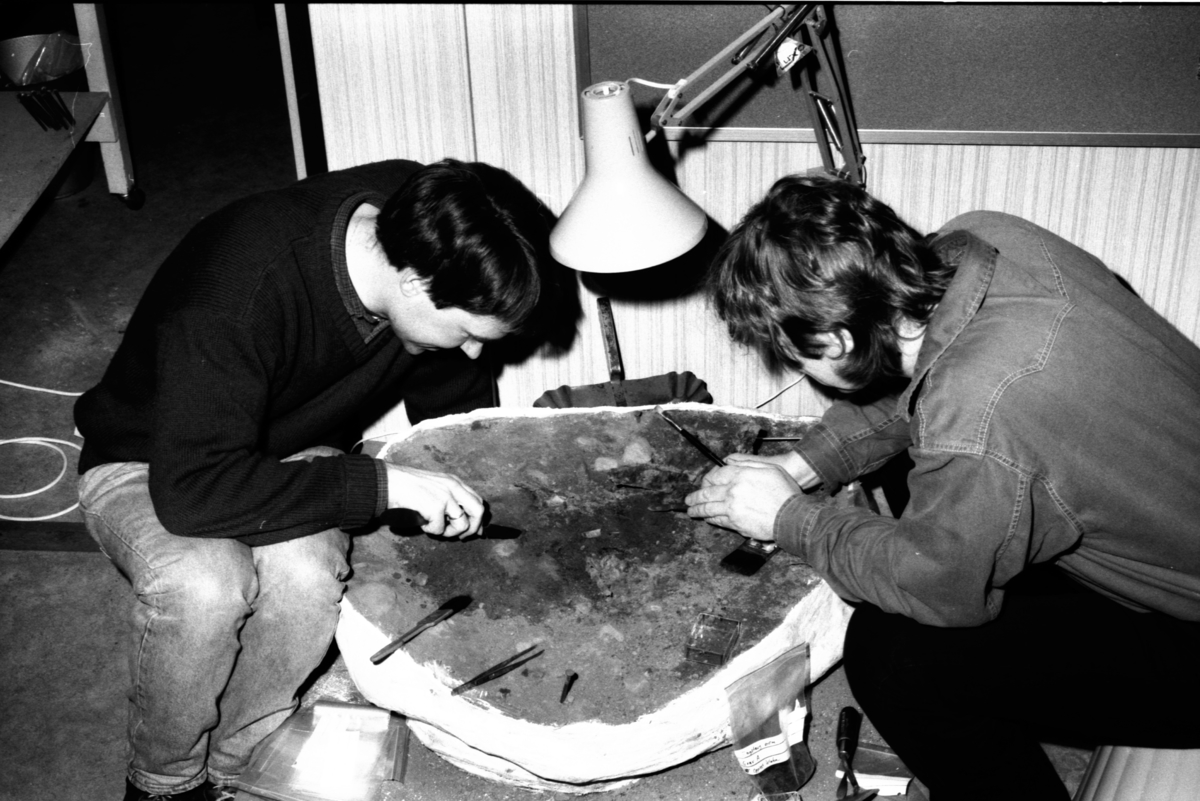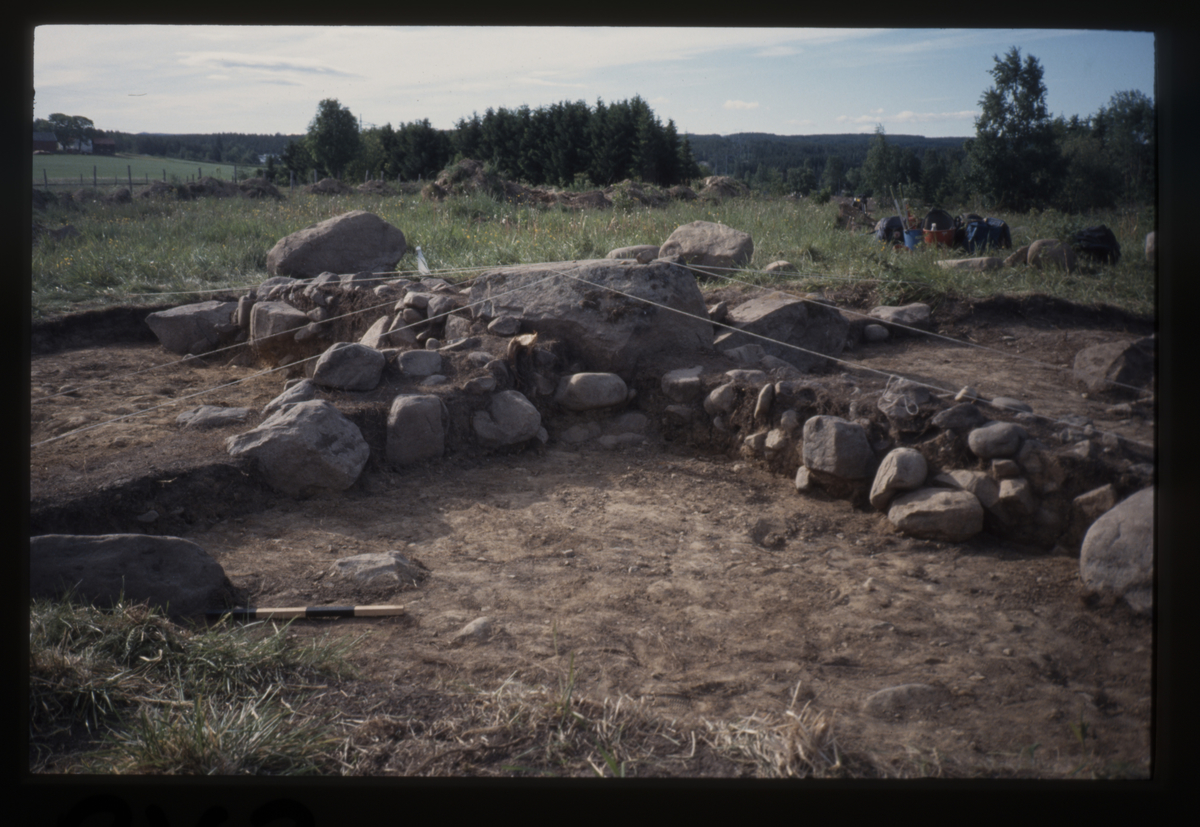Here is Nicolaysens description of this cairn:
Round cairn, 12 feet east of nr. 18, 36 feet in diameter, 5½ feet deep, constructed around a pointed cliff with a height of 4 feet over ground level and a bottom diameter of 12 feet. From 16 feet south east of the centerpoint and 2 feet towards the center is a layer of charcoal, 1 foot wide and 1½ thumb thick.
Yearbook of 1879. The Society for the Preservation of Norwegian Ancient Monuments.
Assuming the most precious artifacts to be located at bottom level in the middle of the cairns, Nicolaysen dug deep holes and left the cairns with big craters piled with stones and soil tossed over the craters edge. Some cairns are changed beyond recognition. Only the most exclusive artifacts were assembled with little regard to context and structure. The artefacts were subsequently studied and typologically dated. Scientifically important finds like bones, coal and other organic materials were discarded or left behind, and are often poorly documented. The methods can be characterized as a treasure hunt.
Today’s research is significantly more detailed and systematically conducted. Every find and its context are neatly documented, photographed and studied. Soil, bone , wooden specimens and others are dated and analyzed using technologically advanced scientific methods. Although much has been said about Nicolaysens research methods, his academic contribution is acknowledged and appreciated in light of its time.

